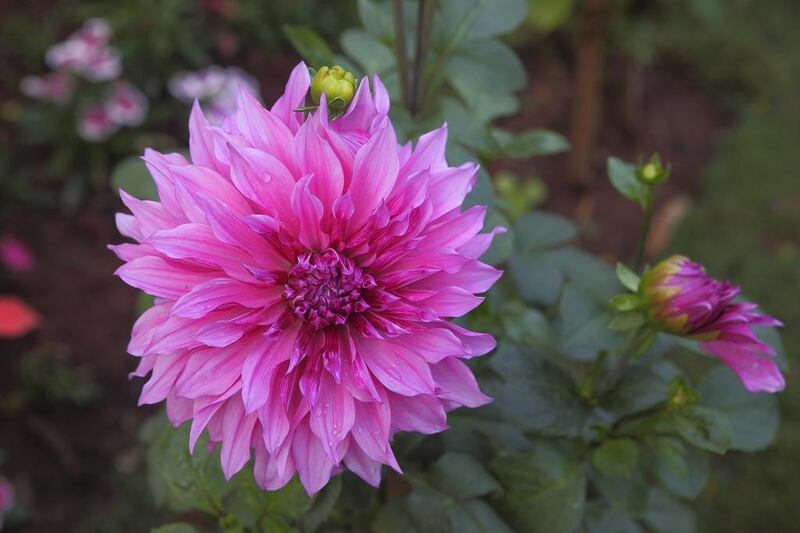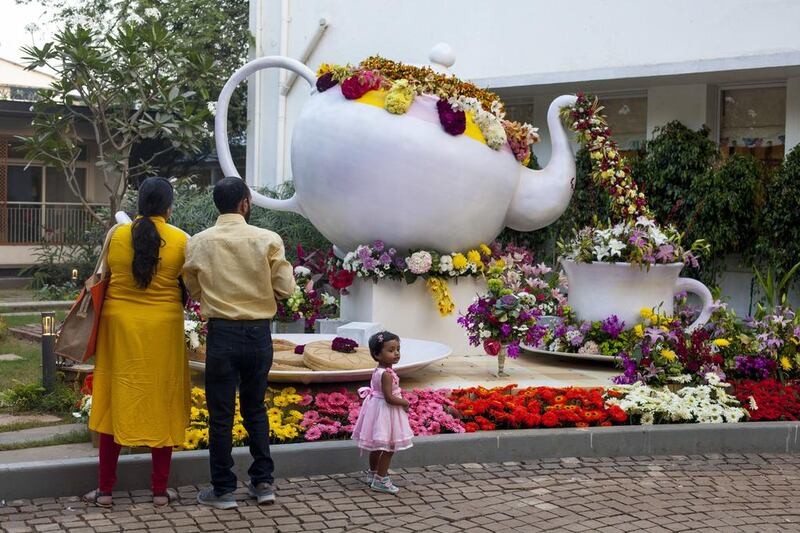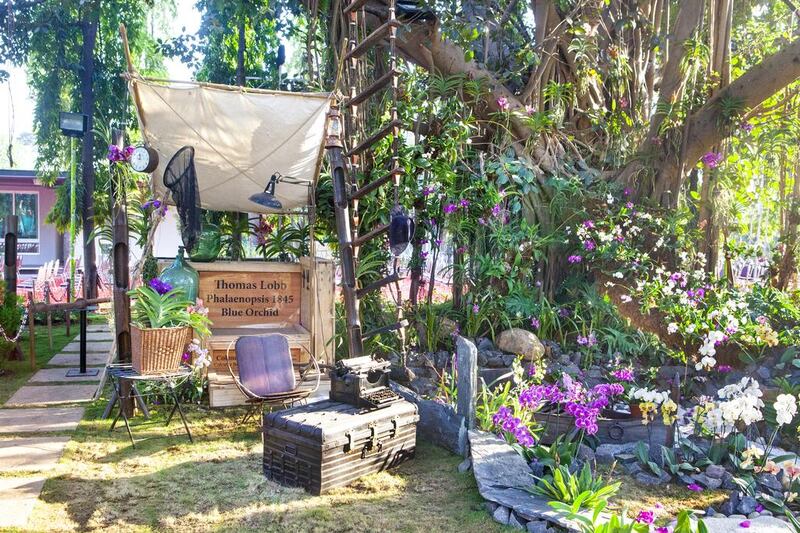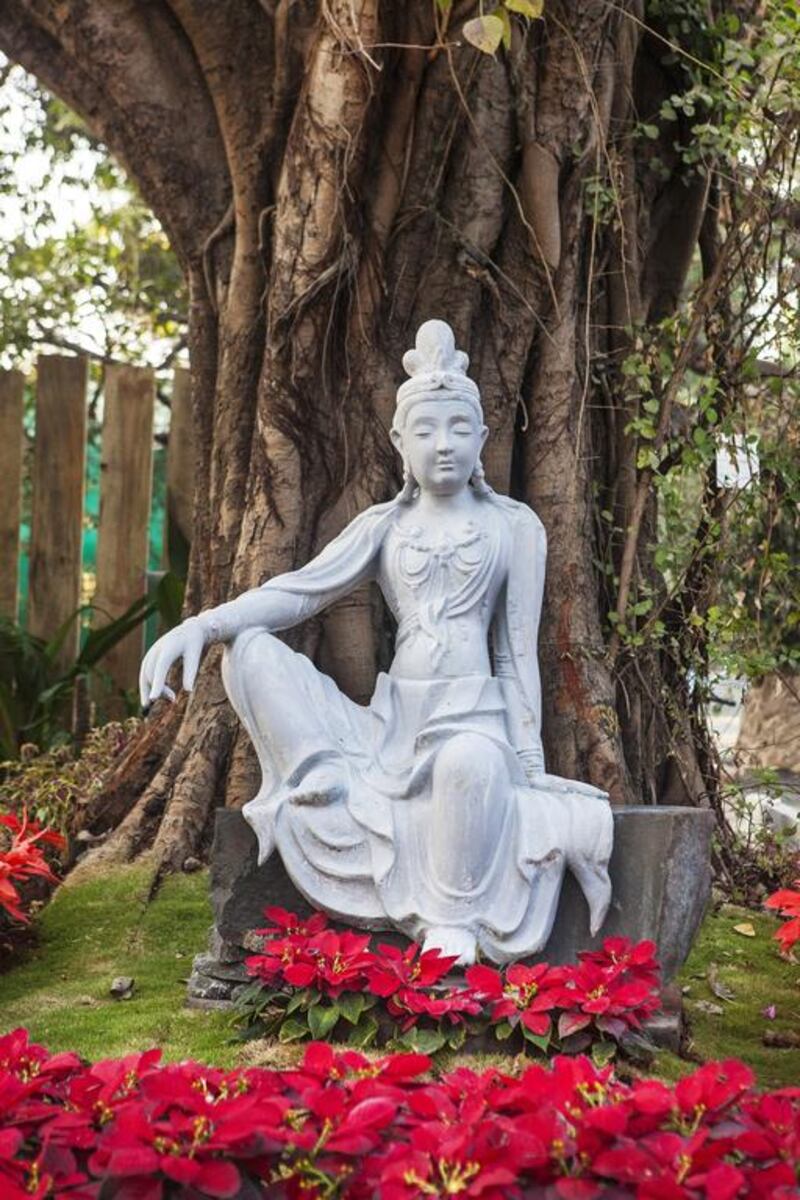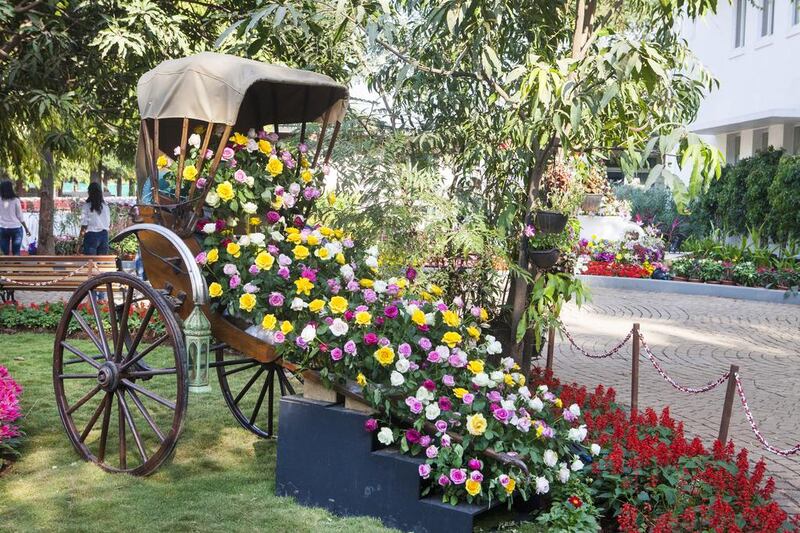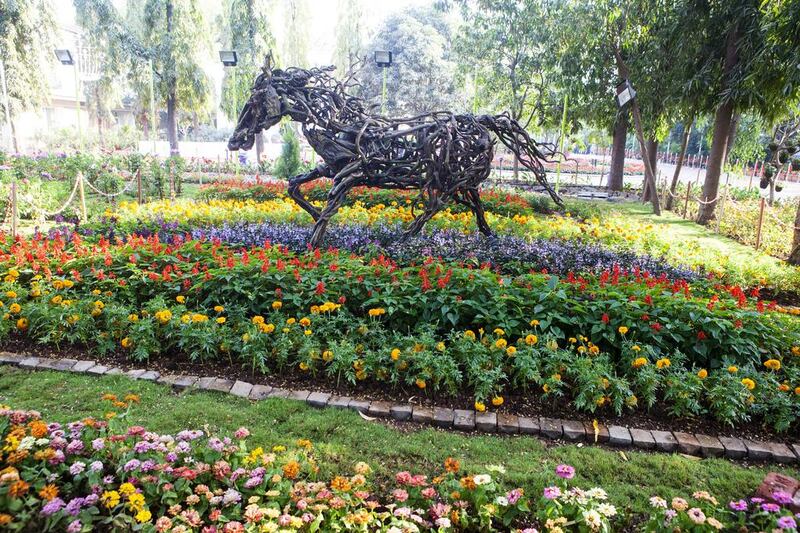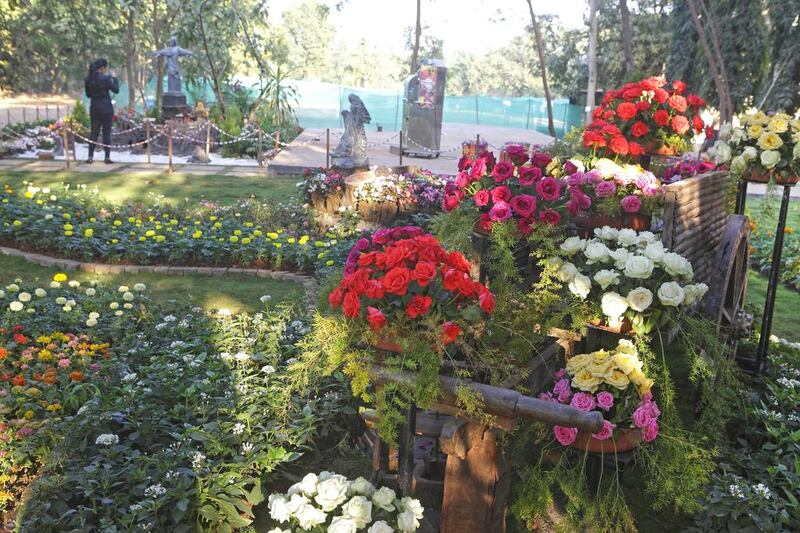India prides itself on its rich, colourful heritage – in its clothing, festivals, food and landscapes, from the snow-capped mountains in the north, to the lush, verdant greenery in the north-east, breathtaking deserts in the west and the backwaters of the south. Thanks to the widely different topographies that coexist side by side, India can also claim to be home to varieties of flowers that wouldn’t normally be seen together.
However, even though the country offers access to an incredible range of flora, this is an experience that, until now, most of its urban-dwellers have been bereft of, particularly in large, overpopulated cities such as Mumbai, the country’s financial hub. Enter the Vaikunth Flower Show, held in Mumbai’s Thane district. A first-of-its-kind show, which finished earlier this week, the event showcased one million flowers of about 140 species and 30 different types of trees, which were imported and cultivated from as far afield as Cuba, Arizona, Africa, the United States and the United Kingdom.
Spread across 13,000 square feet, the flower show was inspired by the Royal Horticultural Society's popular Chelsea Flower Show. And while Vaikunth is still only in its first year, it featured 18 themed gardens, each one measuring 9 metres by 4.5 metres (as prescribed by the Chelsea Flower Show), and each telling a unique story. There was European folklore celebrated in the form of a wishing well alongside the royal Bengal tiger, with Alice from Lewis Carroll's Wonderland crooning All in the Golden Afternoon a few feet away. The only theme that was constant? The riot of colours in every direction stretching as far as the eye could see. It took a team of seven horticulturists, 30 gardeners and four botanists almost six months to put together the visual fest.
The show is the brainchild of Swati Piramal, the vice chairperson of Piramal Enterprises. “We wanted to give the city-dwellers a 45-minute break from the humdrum of their chaotic lives, and take them back towards nature. What better way to do it than to put them in the presence of flowers, where all of us become kids again?” she says.
Piramal has held flower shows at her property in the hill station of Mahableshwar for the past two years, so a lot of the flowers came from her greenhouse there. Even so, growing winter flowers such as balsams, petunias, calendulas, poinsettias, zinnias, salvias, gazania, chrysanthemums, dahlias, roses, pentas, orchids, asters and marigolds in the heat and humidity of Mumbai wasn’t easy. Add to that the untimely winter rains that destroyed almost 30 per cent of the flowers, and it could have been a recipe for disaster. But the team persevered, much to the delight of the 37,000 visitors who travelled to Vaikunth over the fortnight.
The gardens themselves were designed keeping in mind the trees native to the property, and I was delighted to find beauties such as kachnars, bottle brushes, amaltas, gulmohars, pipals, asokas, nilgiris, banyans, quicksticks, subabuls, jasmines and champas seamlessly fitted into the designs.
“Each garden signifies either a moment in history or in the year. We’ve tried to capture the spirit of the Chelsea Flower Show, and I think we’ve succeeded fairly well,” says Piramal.
While the flowers alone were enough to make the trip to the distant Mumbai suburb worthwhile, what I loved more was the richness of the stories unfolding in the gardens, often with the help of installations.
The history lessons started almost immediately. As soon as I entered, I was greeted by the sight of The Little Sultan – a miniature replica of India's first passenger train, which had its maiden run from the then Victoria Terminus (now Chhatrapati Shivaji Terminus) in south Mumbai to Thane in 1853. The train was drawn by three engines, Sahib, Sindh and Sultan, from which the facsimile at Vaikunth derived its name. While the train was originally envisaged to transport children around the 32-acre plot, it was a big hit with the adults visiting the show as well.
The first of the 18 gardens was the President A P J Abdul Kalam Tribute Garden. It was designed to celebrate the spirit of one of India’s most beloved leaders and the architect of its nuclear programme, with a signed stone nesting among a bed of vibrant red poinsettias.
A little ahead was the Rickshaw of Roses, which, as the name suggests, was dedicated to roses, and with its heady aroma, was an assault on the olfactory senses. It housed seven varieties of roses, one of the most difficult species to cultivate. While roses are known to bloom in Mumbai, they don’t normally reach the size seen at the flower show because of the city’s hot and humid climate. The crowning glory in the garden was the black rose, which can typically be found in Pune.
Two of my favourites were the Orchid Garden and the white Babul-ul Hind Garden, or the Persian Gardens. The former represented the history, hardships and triumphs of orchid hunters, particularly the British botanist Thomas Lobb, who’s credited with the discovery of an orchid species in the Himalayas and taking the blue orchid from the Khasi Hills in Assam to Britain in 1850, where it was greatly appreciated by the Horticultural Society of London. A majestic banyan tree with thick ropes of five species of orchids – dendrobium, vanda, cattleya, phalaenopsis and maker – in multicoloured hues hanging from its branches was a prominent feature of this garden. The garden also had the orchid hunter’s desk, a typewriter (which signified the orchid hunter’s notes), a butterfly net and his trunks – to transport his finds home.
The Persian Gardens were an ode to the 17th-century Mughal emperor Jahangir, who had set about to create an eternal garden, a paradise on earth. There was a pathway created with white pebbles, on which rested marble fountains and jharokhas, all in white. The garden featured all white flowers, including roses, pentas, marigolds, euphorbias and bougainvilleas. It was inspired by one of the most talked-about gardens at the Chelsea Flower Show this year. Created by the Emirati landscape designer Kamelia Bin Zaal, the original, called The Beauty Of Islam, was her attempt to bring together western and eastern cultures, and positively affect the western world’s perception of Islam.
The Maratha Horse Garden, which featured a horse made completely out of twigs, in flight, signified the speed and strength of the now-extinct Deccan Horse, the carriers of many Deccan Maratha paltans that helped them conquer Bassein and Thane in the 18th century.
The Ranthambhore Wildlife Garden, meanwhile, was an acknowledgement of the national animal of India, the tiger. A lifelike sculpture of a growling royal Bengal tiger was placed among blades of sharp yellow grass, a small but notable distance away from the flowers. To me, this little detail showed the careful thought and planning that went into the structuring of the space; tigers, after all, belong in the forests, not gardens. And there was one garden dedicated to Gandhi and his love of bullock carts, because who can think of India and not picture Bapu?
There was also Brazil – The Landscape to herald in the 2016 Rio Olympics, carpeted with geraniums. It aimed to capture the beauty of Brazilian favelas and little football champs across the country, dreaming of becoming international sporting stars.
From historical, it was on to the magical and the mystical, much to the delight of the younger visitors, with the eye-catching Wishing Well Fairy Garden, the Toyland Garden, the Enchanted World of the Nutcracker and Mrs Teapot from Beauty and The Beast garden, another Chelsea favourite. The Wishing Well Fairy Garden was inspired by the European folklore that water bodies housed deities that could grant wishes. The wishing well stood among rows of daisies and roses, with fairies and frogs gathered around it. The Toyland Garden was a hat tip to the much-loved world of Enid Blyton’s Noddy. The teapot garden featured a 1.8-metre-tall kettle, an almost exact replica of the Chelsea original, and the enchanted garden celebrated the spirit of Christmas, as made popular by the fairy tale.
Apart from the flowers that stretched in every direction, the ground also held the under-construction Garden of the Vedas, which featured 14 exquisite sculptures by the internationally acclaimed sculptor Adwaita Gadanayak. The granite for the sculpture garden came from Hampi, one of India’s oldest surviving ancient cities.
Vaikunth might have been missing the pizzazz and glamour that Chelsea has come to be associated with among gardening enthusiasts, not to mention the laugh-out-loud hats and outfits, but it undoubtedly brought its own brand of showmanship to the city, and even the country. In addition to the flower show, the evenings were lit by spectacular light shows and live performances on the weekends. There was a walkway with ashoka trees decked in lights, and another created by installing about 27,000 coloured bottles that lit up in the dark. And for music fans, a Beatles-themed cafe is set to open its doors on the property in the near future.
Even though the flowers had been grown specifically and not just plucked and presented like most other flower shows, they aren’t expected to last very long, because they can’t naturally survive in Mumbai’s climate. By next month, most of them will have wilted and died. “But we’re definitely planning to come back next year,” promises Piramal. If they do, a guide or two, or at least markers to identify and differentiate the flowers, and some basic literature explaining the meaning and significance of the sculptures and other installations, would certainly be a welcome addition to this colourful and much-needed showcase.
weekend@thenational.ae
